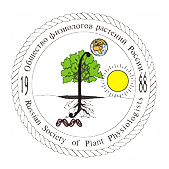Новости науки и практики // Сентябрь 2023

Stomatal closure during water deficit is controlled by below-ground hydraulics
Abdalla et al. used a novel root pressure chamber to measure, during soil drying, the relation between transpiration rate (E) and leaf xylem water pressure (ψleaf-x) in tomato shoots grafted onto two contrasting rootstocks, a long and a short one.
https://academic.oup.com/aob/article/129/2/161/6454249?utm_source=substack&utm_medium=email
A unique C-terminal domain contributes to the molecular function of Restorer-of-fertility proteins in plant mitochondria
Huynh et al. show that removing the RfCTD from the RFL protein RNA PROCESSING FACTOR 2-nad6 prevented cleavage of its RNA target, the nad6 transcript, in Arabidopsis thaliana mitochondria.
https://nph.onlinelibrary.wiley.com/doi/10.1111/nph.19166?utm_source=substack&utm_medium=email
The AUX1-AFB1-CNGC14 module establishes a longitudinal root surface pH profile
Serre et al. show, by using an improved method for visualization and quantification of root surface pH, that the Arabidopsis thaliana root surface pH shows distinct acidic and alkaline zones, which are not primarily determined by the activity of AHA H+-ATPases. Instead, the distinct domain of alkaline pH in the root transition zone is controlled by a rapid auxin response module, consisting of the AUX1 auxin influx carrier, the AFB1 auxin co-receptor, and the CNCG14 calcium channel.
https://elifesciences.org/articles/85193?utm_source=substack&utm_medium=email
It all depends on the genetic diversity
Natural tobacco mutants impaired in their defenses produce more offspring in years of low herbivore pressure and thus persist in plant populations
https://www.eurekalert.org/news-releases/998859
Cell polarity linked to gravity sensing is generated by LZY translocation from statoliths to the plasma membrane
In flowering plants, starch-accumulating plastids, known as amyloplasts, act as statoliths to facilitate downstream gravitropism. The gravity sensing mechanism has long been considered a mechanosensing process by which amyloplasts transmit forces to intracellular structures, but the molecular mechanism underlying this has not been elucidated. Nishimura et al. show that LAZY1-LIKE (LZY) family proteins involved in statocyte gravity signaling associate with amyloplasts and its proximal plasma membrane.
https://www.science.org/doi/10.1126/science.adh9978?utm_source=substack&utm_medium=email
Auxin as an architect of the pectin matrix
This review examines the mechanism of auxin activity in regulating pectin chemistry at organ, cellular, and subcellular levels across diverse plant species.
Are chromosome number and genome size associated with habit and environmental niche variables? Insights from the Neotropical orchids
The entangled relationship of chromosome number and genome size with species distribution has been the subject of study for almost a century, but remains an open question due to previous ecological and phylogenetic knowledge constraints. To better address this subject, Moraes et al. used the clade Maxillariinae, a widely distributed and karyotypically known orchid group, as a model system to infer such relationships in a robust methodological framework.
https://academic.oup.com/aob/article/130/1/11/6526429?utm_source=substack&utm_medium=email
ERFVII action and modulation through oxygen-sensing in Arabidopsis thaliana
Oxygen is a key signalling component of plant biology, and whilst an oxygen-sensing mechanism was previously described in Arabidopsis thaliana, key features of the associated PLANT CYSTEINE OXIDASE (PCO) N-degron pathway and Group VII ETHYLENE RESPONSE FACTOR (ERFVII) transcription factor substrates remain untested or unknown. Zubrycka et al. demonstrate that ERFVIIs show non-autonomous activation of root hypoxia tolerance and are essential for root development and survival under oxygen limiting conditions in soil.
https://www.nature.com/articles/s41467-023-40366-y?utm_source=substack&utm_medium=email
A new family of proteins is required for tethering of Casparian strip membrane domain and nutrient homoeostasis in rice
This study provides valuable insights into the junctional complex of plant endodermal cells, shedding light on our understanding of nutrient homoeostasis in crops and the cell junctions of eukaryotes.
https://www.nature.com/articles/s41477-023-01503-z
Circadian regulation of metabolism across photosynthetic organisms
de Barros Dantas et al. examine the roles of circadian regulation in metabolic processes in source and sink organ structures of Arabidopsis. They also evaluate possible roles for circadian regulation in root exudation processes that deposit carbon into the soil, and the nature of the rhythmic interactions between plants and their associated microbial communities.
https://onlinelibrary.wiley.com/doi/10.1111/tpj.16405?utm_source=substack&utm_medium=email
Arabidopsis stomatal lineage cells establish bipolarity and segregate differential signaling capacity to regulate stem cell potential
Cell polarity combined with asymmetric cell divisions (ACDs) generates cellular diversity. In the Arabidopsis stomatal lineage, a single cortical polarity domain marked by BASL orients ACDs and is segregated to the larger daughter to enforce cell fate. Wallner et al. discovered a second, oppositely positioned polarity domain defined by OCTOPUS-LIKE (OPL) proteins, which forms prior to ACD and is segregated to the smaller (meristemoid) daughter.
Molecules in vegetables can help to ease lung infection
Researchers have found that molecules in vegetables like broccoli or cauliflower help to maintain a healthy barrier in the lung and ease infection.
https://www.sciencedaily.com/releases/2023/08/230816114227.htm
MYB24 orchestrates terpene and flavonol metabolism as light responses to anthocyanin depletion in variegated grape berries
A study on the rare variegation in grape berries has found that accumulation of products from phenylpropanoid and isoprenoid pathways, influenced by the MYB24 gene, showed a contrary tendency in red and white sections of the berries. The MYB24 gene, whose regulation is developmentally triggered after berry ripening onset, is suggested to modulate ultraviolet and high-intensity visible light stress responses that include terpene and flavonol synthesis, potentially affecting carotenoids, but it only partly succeeds in ameliorating light-stress during late ripening.
Новости
Новости науки и практики // Июль 2024
Обзор научных новостей, опубликованных во всемирной паутине за последний месяцНовости науки и практики // Июнь 2024
Обзор научных новостей, опубликованных во всемирной паутине за последний месяцНовости науки и практики // Май 2024
Обзор научных новостей, опубликованных во всемирной паутине за последний месяц


Объявления
Записей не найдено.



